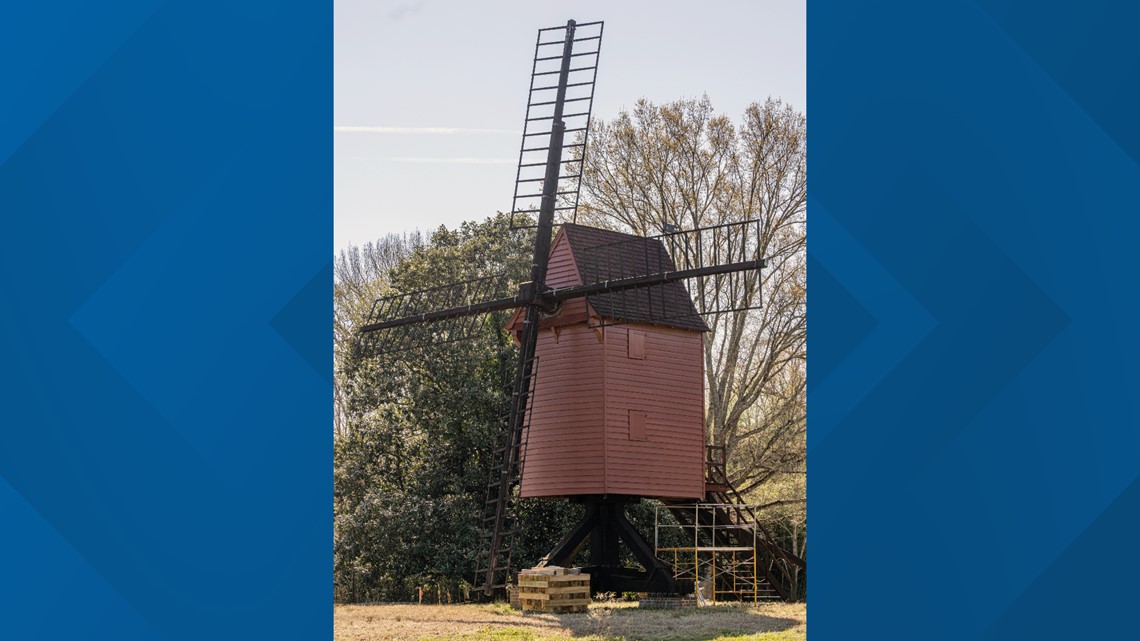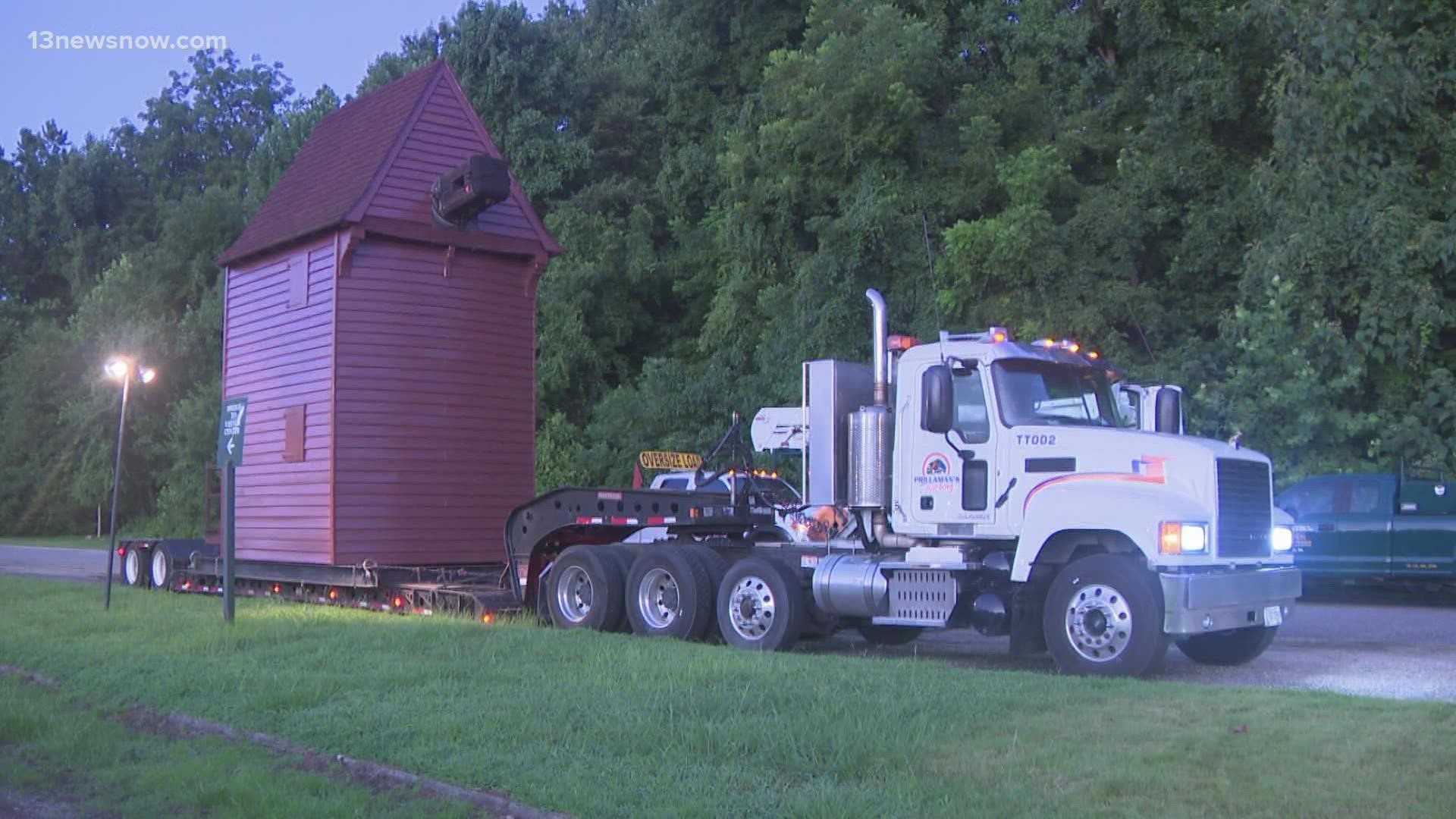NORFOLK, Va. — Monday was moving day for the Colonial Williamsburg windmill.
The windmill was relocated from behind the Colonial Williamsburg Foundation Visitor Center -- where it had stood for 12 years -- to the intersection of Francis Street and Bucktrout Lane.
Colonial Williamsburg staff led by Matthew Webster partnered with contractors including B.E. Hassett Millwrights and Prillaman Crane and Rigging to move the 28,000-pound mill house to its new site via a flatbed truck, a spokesperson for Colonial Williamsburg said.
The aim of the move is to improve visitor access to the iconic landmark and to create a more engaging and immersive guest experience around 18th-century farming, the spokesperson said.
Most of the windmill's components were already moved, and the mill house is the last piece of the puzzle.


Unlike other windmills, the Colonial Williamsburg windmill is a "post" windmill. That means the entire two-story mill house and sail rotate together atop a post-and-trestle base. A miller rotates the structure to the wind using a wheeled tailpole boom that protrudes from the house.
Windmills are a part of the state's heritage.
The "Frenchmen's Map" of Williamsburg shows a windmill located along present-day South Henry Street and documentational evidence shows that windmills were also transported in the 18th century.
Colonial Williamsburg's windmill was constructed in 1957 and based on the 1636 Bourn Mill in England. It was originally located behind the Peyton Randolph House before moving behind the visitor center.

